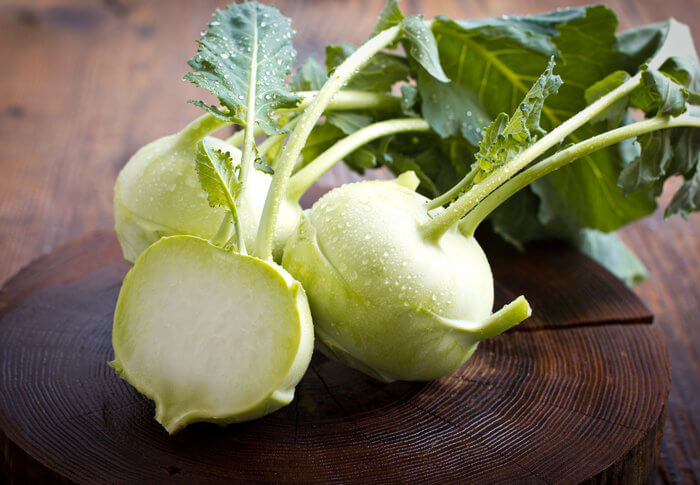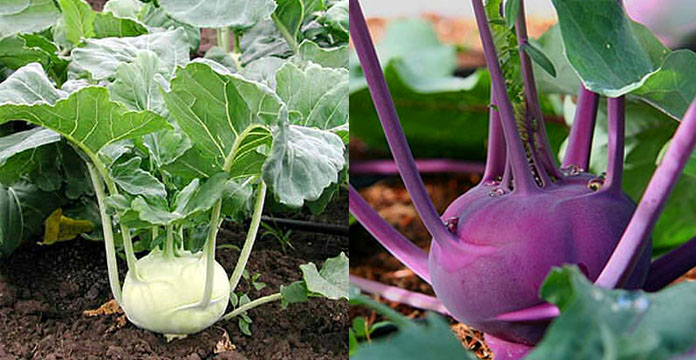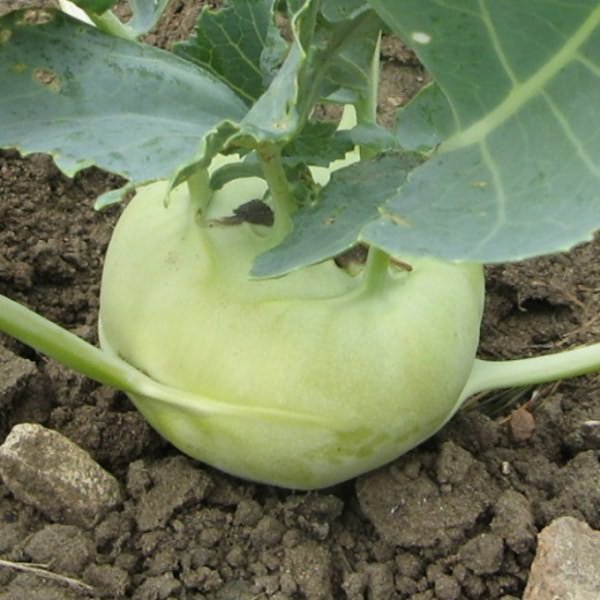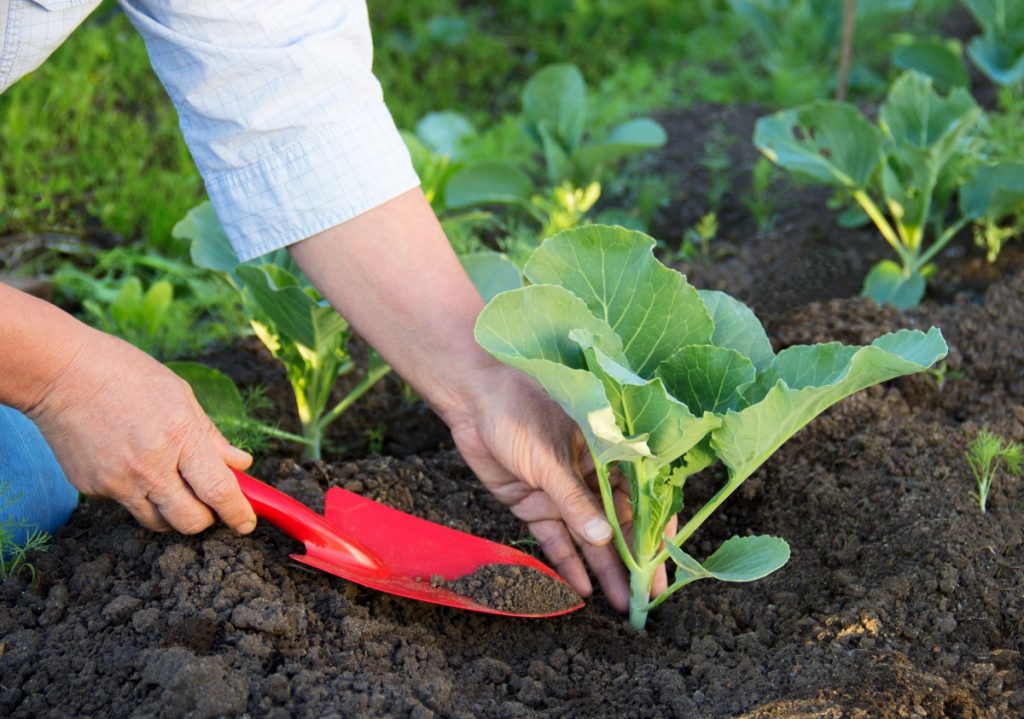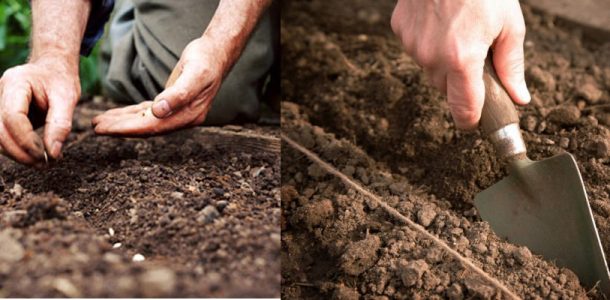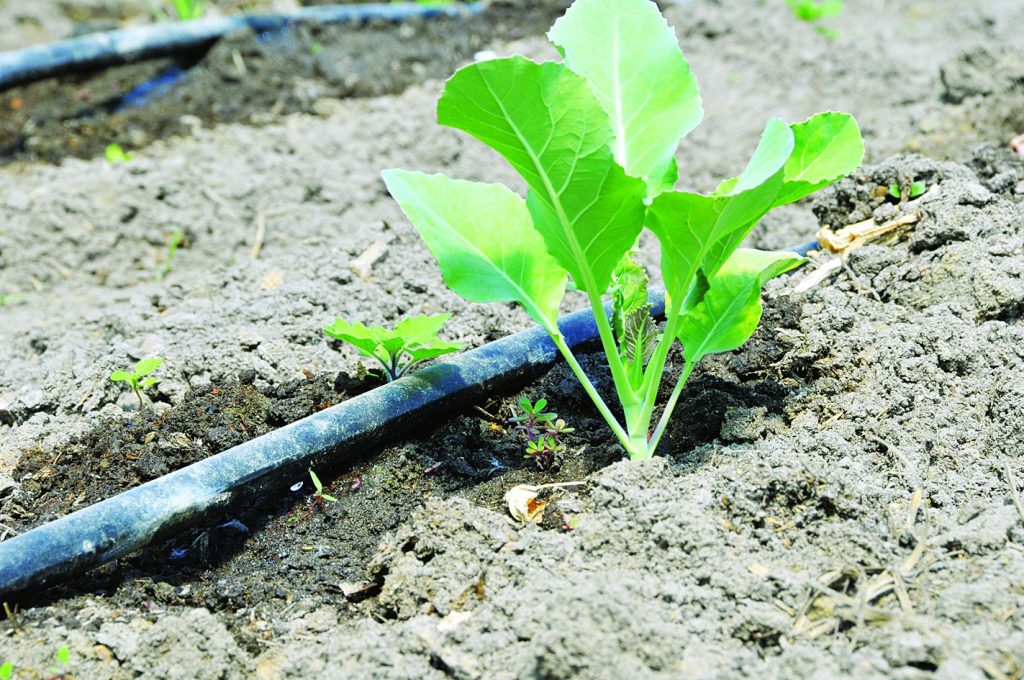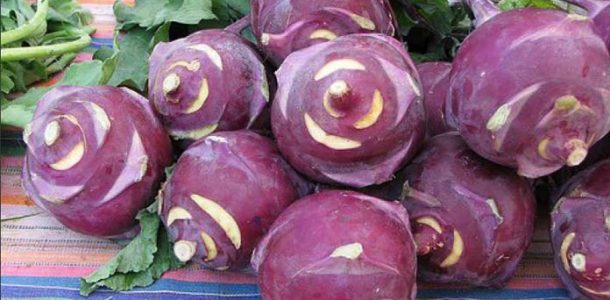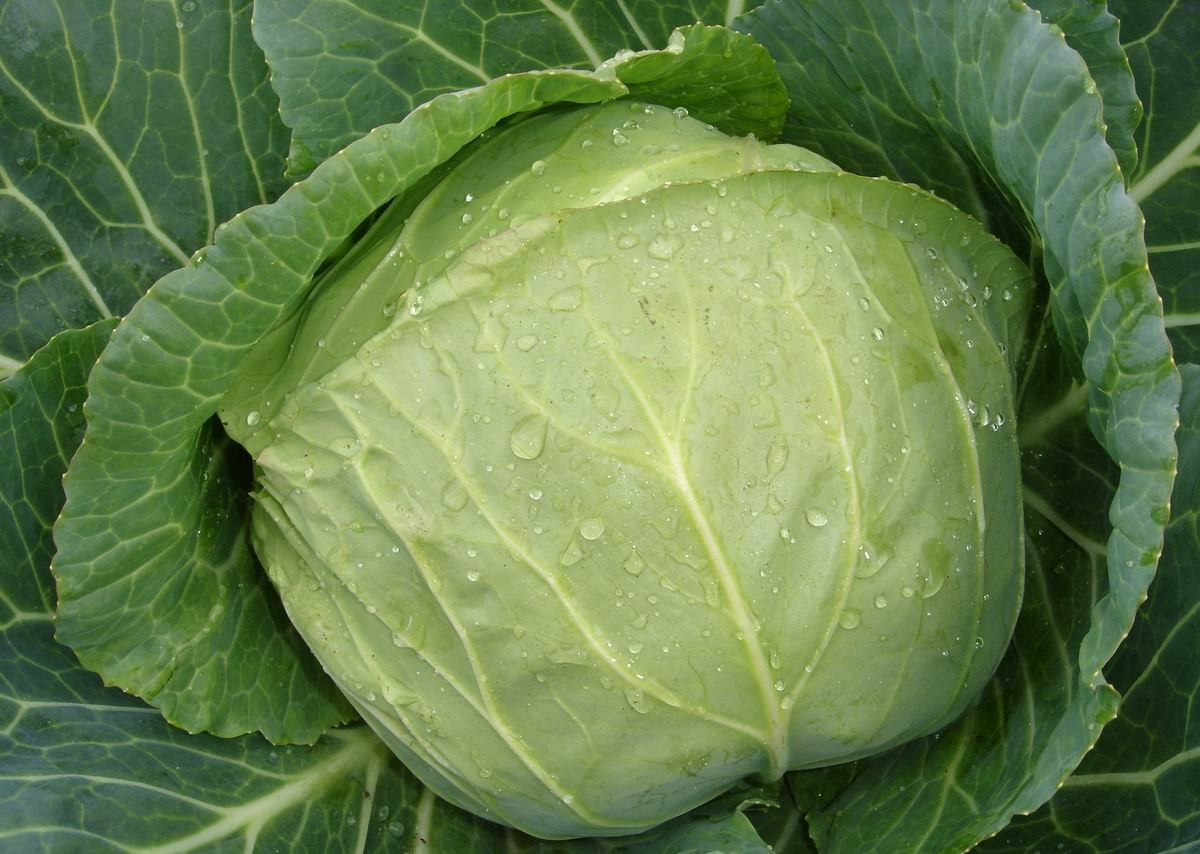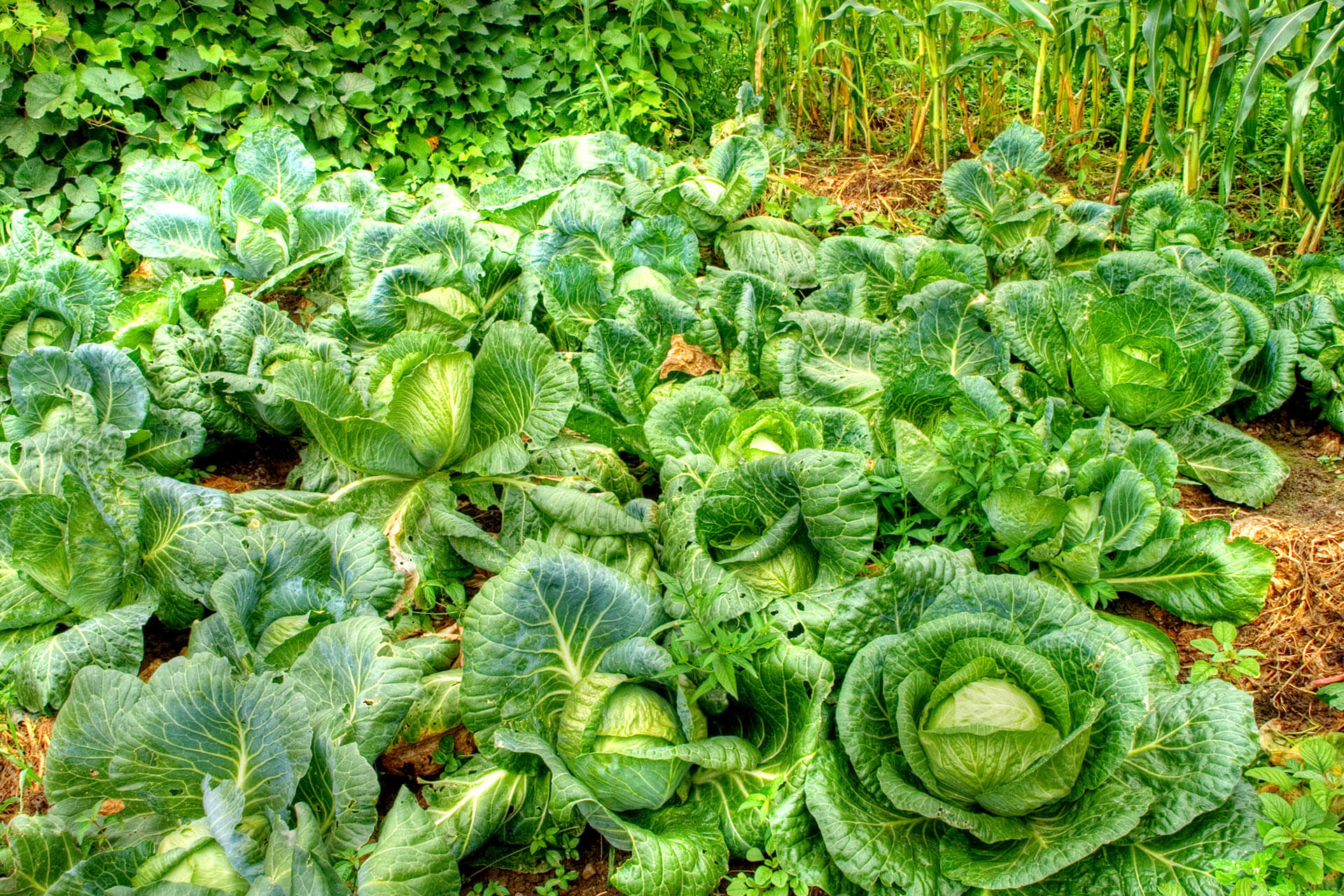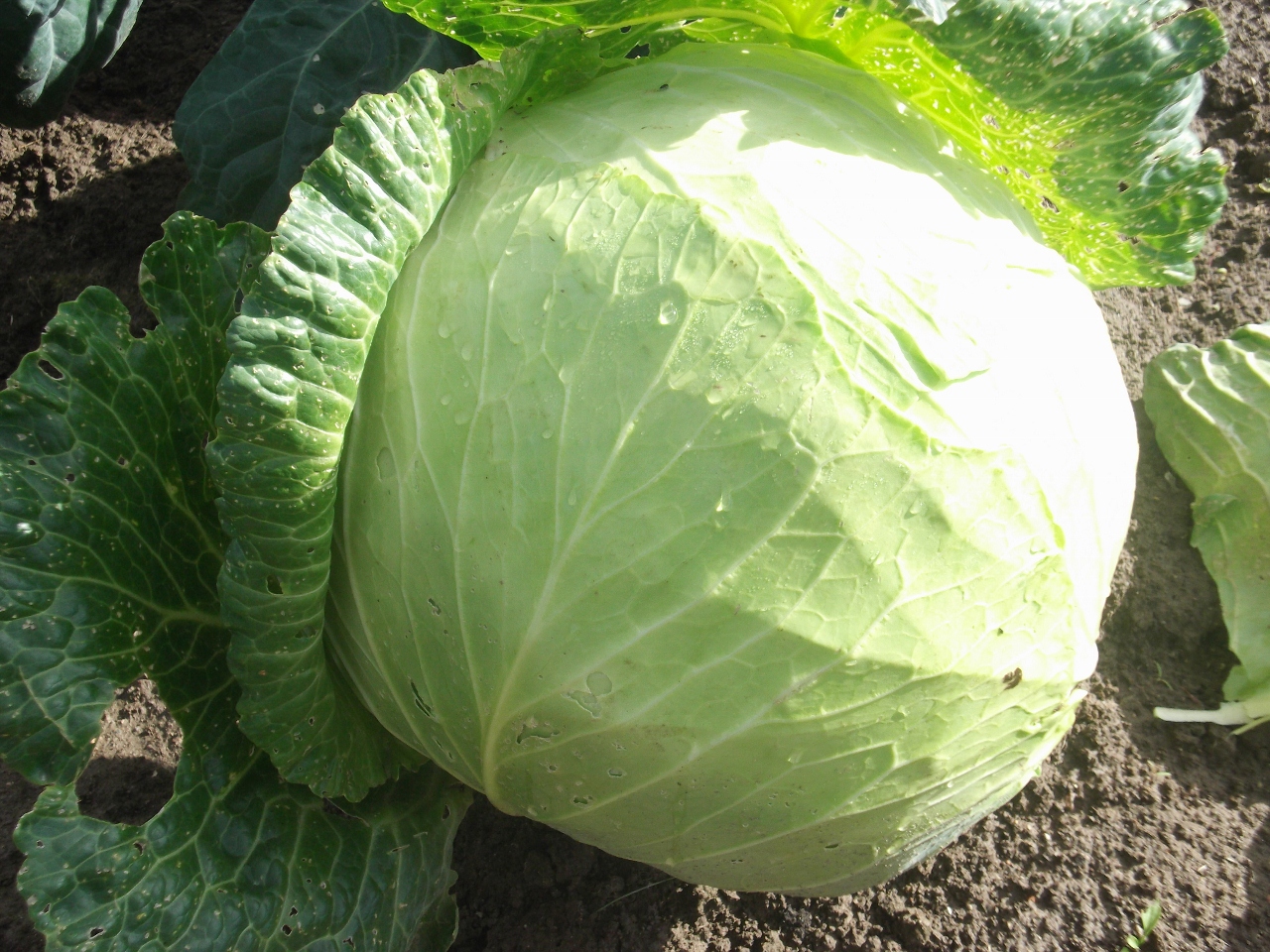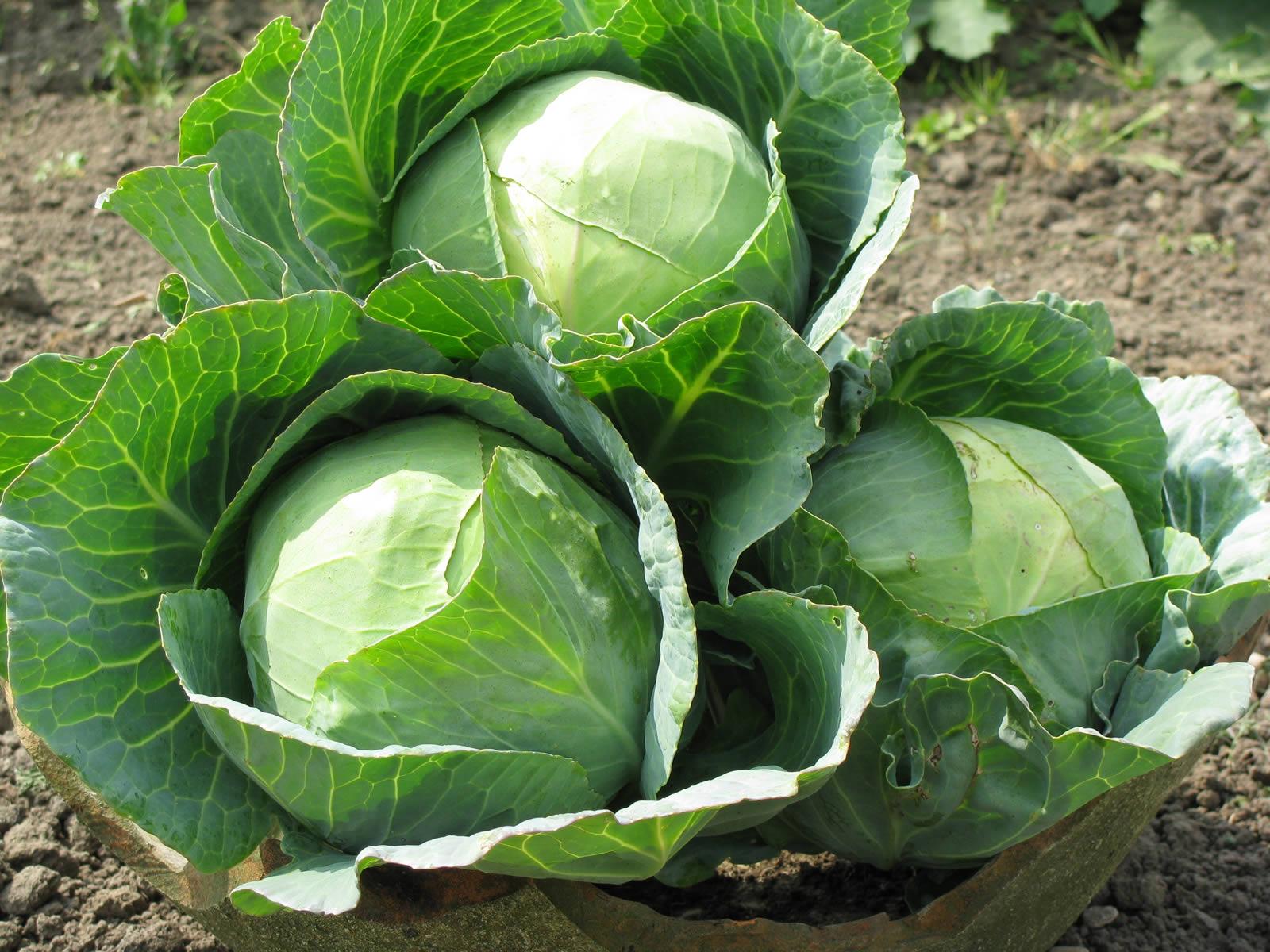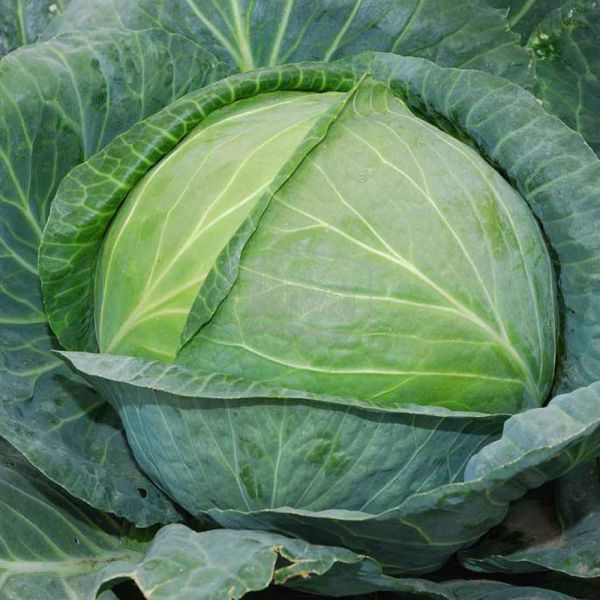Content:
Kohlrabi cabbage is a rounded stem-type fruit with a sweetish taste.
Kohlrabi is used to prepare such types of culinary products as:
- salads;
- side dishes;
- homemade casseroles.
In addition, kohlrabi cabbage contains a large amount of vitamins and beneficial trace elements. Due to its low calorie content, this product is often used in the diet menu.
Description of kohlrabi cabbage
The appearance of the fruit resembles a turnip. The taste of kohlrabi is often compared to cabbage stump, but this stalk is considered more juicy and has a softer consistency.
The color of kohlrabi fruits can be represented by several shades:
- pale green;
- yellow;
- pink.
The color of the flesh can be white or light beige.
The shape of the fruit can also be presented in several variations:
- rounded;
- oblong;
- flattened.
The average weight of a vegetable is 0.5 kilograms.
The most popular varieties among domestic summer residents are:
- Vienna White 1350 is an early ripening variety of kohlrabi (the number of days from germination of seedlings to maturation of vegetables is 71). The size of the fruit is 8 centimeters, the color is light green, the weight is 100 grams, the shape is round. Having a tendency to outgrow. Cabbage of this variety is not intended for long-term storage. Subject to additional planting, the crop can be harvested four times during the season;
- Kohlrabi giant is a late-maturing Czech variety. The number of days from germination of seedlings to harvesting of fruits is 93. The fruit is large, light green in color, round, weight - 3 kilograms, diameter - 17 centimeters. The pulp has a juicy consistency. The plant has good drought tolerance. Vegetables are considered suitable for long-term storage;
- Blue Planet F1 is a medium-ripening kohlrabi. Cabbage color is bluish-green, weight is about 200 grams, its shape is flat-round. The pulp has a dense, soft structure, without fibers. Vegetables can be stored for a long time;
- Delicacy white cabbage is an early ripening cabbage. The color of the vegetable is white. Fruits contain a large amount of sugar and vitamins. In order to avoid overgrowing, the crop should be harvested when vegetables reach 8 centimeters in diameter. The variety is considered demanding on soil moisture conditions;
- Moravia is a medium early kohlrabi variety. Fruit color - light green, flat-round shape. The pulp is distinguished by a juicy consistency and good gastronomic qualities. The frost resistance index of this variety is average.Cabbage tends to overgrow. Recommended for planting in a greenhouse, it can also be a greenhouse;
- Piquant is a kohlrabi variety of the ultra-early ripening segment. The shape of the fruit is round, the color is white-green, the weight is 0.8 kilograms. The variety has good gastronomic characteristics. Vegetables do not crack or outgrow, they are considered suitable for storage for a long time.
Planting and agricultural technology kohlrabi how to grow
The area under kohlrabi cabbage cultivation should receive a sufficient amount of natural light. Despite the ability of this type of vegetable crop to germinate in any type of soil, it is possible to obtain a high quality crop only when growing this cabbage in soil conditions that have a neutral or weak acidity level. In addition, good drainage is imperative. All this will contribute to a more abundant germination of the deciduous part, and will also have a positive effect on the size of the fruit.
The planting soil should contain the following trace elements in sufficient quantity:
- nitrogen;
- phosphorus;
- potassium.
The list of crops that are recommended to grow before kohlrabi are:
- legumes;
- bow;
- carrot;
- potatoes;
- cucumber;
- beet.
When is it better to plant kohlrabi cabbage
The beginning of the landing events is the month of May. The first planting in open ground is carried out after the appearance of two leaves - this happens 44 days after the seed has been planted in the soil.
The harvesting of kohlrabi planted in early May begins in early summer. In May, you can sow seed for a second planting. Seedlings planted in late June will harvest in mid-fall.
What is the scheme for planting kohlrabi
The planting depth should reach the beginning of the growth of the first leaves. A plant is considered ready to grow in a permanent location with 5 leaves. The best conditions for planting operations are considered to be cloudy weather or in the evening. It is recommended to shade the seedlings two days after planting.
The preferred scheme for medium early varieties is 70X30 centimeters, medium late - 70X45 centimeters.
Covering the planting material with film or agrofibre promotes faster plant development. However, then the seedlings should be planted at a shallower depth.
For seed sown on an open bed, before growing kohlrabi cabbage, it is necessary to create furrows 2 centimeters deep. After that, the seedlings should be thinned out, leaving the most healthy ones.
Recommendations on how to grow kohlrabi
Kohlrabi cabbage should be grown on the southern or southeastern side of the site.
After planting seedlings, the earth must be tamped, thoroughly watered and covered with soil material in order to reduce moisture evaporation. The thinning procedure is also mandatory.
A deep planting can adversely affect the formation of the fruit, and the plant grows poorly and begins to bloom profusely.
Watering and fertilizing kohlrabi
It is possible to carry out competent care and cultivation of kohlrabi if watering work is carried out regularly - every 2 days. With sufficient germination, the amount of watering is reduced to once a week.
It is necessary to fertilize plantings 4 times during the season, with an interval of 10 days. For the first fertilization, poultry manure is used, for the second - rotted manure, in the next - mineral-based fertilizers and peat oxidate. Preparations based on chemistry are not recommended for use.
Cabbage harvesting rules
Harvesting ripe vegetables can be started 2 months after planting. The maximum fruit diameter should be 10 centimeters.
Vegetables of late-ripening kohlrabi varieties for long-term storage are harvested simultaneously with white cabbage at an air temperature of + 4 ° C, in the absence of frost. The storage temperature of vegetables should be maintained at 0 ° C with 95% humidity.
In freshly harvested kohlrabi, it is necessary to cut off the leaf part, leaving 2 centimeters about the fruit. The roots are also taken from the soil, not cut off. The processed crop is put in a box, covered with any sand, except river.
When sprinkling cabbage with wet sand and storing in a cellar, the fruits will remain fresh for six months. When frozen, this period increases to 9 months.
To do this, vegetables should:
- wash;
- clear;
- slice;
- blanch for 3 minutes;
- cool;
- put in bags;
- to freeze.
Kohlrabi is a very useful vegetable crop, the cultivation of which is easily accessible for any site, which may be, for example, a summer cottage or a vegetable garden within the city. Compliance with the recommendations for cultivation, harvesting and processing of the crop will allow you to have this wonderful vegetable in your home all year round.
